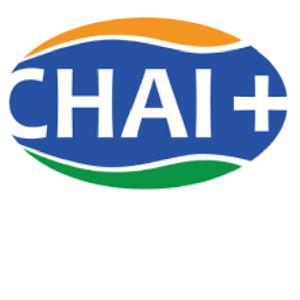Chapter 1: Understanding COVID-19 and the coronavirus
Unit 1 (Video, 23 mins): Q&A with Virologist Peter Piot about COVID-19: At TEDMED 2020 (March 3), Virologist and London School of Hygiene & Tropical Medicine Director Peter Piot sat down for a Q & A with TEDMED's Jay Walker to talk about the “novel” coronavirus.
Unit 2 (Video, 30 mins): COVID-19: What we are learning about this new coronavirus: In this 30-minute webinar, Paul Auwaerter, MD, MBA, Professor of Medicine at Johns Hopkins University, provides a thorough overview of Covid-19 and how utilizing updated, authoritative, and evidence-based resources, such as the Johns Hopkins ABX Guide, can improve patient care.
Unit 3 (Video, 65 mins): COVID 19: This online webinar (almost 65 minutes) was conducted and recorded by AIIMS on 27 March 2020. Dr Vijay Hadda, Associate Professor of Department of Pulmonary Critical Care and Sleep Medicine, presented about the epidemiology and diagnosis of COVID-19 along with Dr Saurabh Mittal who explained practices of Infection Prevention Control (IPC) measures .
Chapter 2: Testing and Diagnosis
Unit 1 (PDF Document): WHO Module 5: Differential diagnosis, specimen collection & diagnostic tests. At the end of this module, you will be able to: • Develop a differential diagnosis for patients with severe pneumonia. • Recognize patients with SARI that may have respiratory virus with pandemic potential. • Describe when and what specimens to collect for laboratory diagnosis. • Describe the characteristics of diagnostic tests for respiratory virus infections.
Unit 2 (PDF Document): WHO Guidance document: Laboratory testing for coronavirus disease (COVID-19) in suspected human cases. Interim guidance issued 19 March 2020.
Unit 3 (Video, 03 mins): How Coronavirus Test Kits Work: This brief news video by the Wall Street Journal describes the challenge of developing an accurate coronavirus test kit as well some of the ways that testing can produce inaccurate results.
Chapter 3: Infection prevention and control (IPC)
Unit 1 (Video, 60 mins): Preparing health workers for COVID-19: During this webinar provided by SafeCare, you can learn: • Key tips for limiting infections • How to prepare your facility. • How to train all members of staff on identifying and handling suspected patients with COVID-19.
Unit 2 (Video, 17 mins): Preparing health workers for COVID-19: In this interview recorded on March 12, world renowned virologist, Dr. Ian Lipkin speaks to India Today about fighting the coronavirus outbreak, explaining the importance of antibody tests that can show if an individual has ever been infected, even if the person has never shown symptoms. He describes some of the current efforts to trial new therapies, such as those using plasma. He also speaks of important prevention measures
Unit 3 (PDF Document): WHO Module 1b: infection prevention and control (IPC) for patients with Severe Acute Respiratory Infection (SARI): This module by WHO presents principles of IPC when you are caring for patients with ARI and describes specific measures to take in the hospital when caring for patients with SARI, including those with COVID-19.
Chapter 4: Triaging and Case Management
Unit 1 (Video, 60 mins): WEBINAR - Respiratory Management of severe COVID-19 patients: In this webinar organized by Philips, frontline clinicians who have treated many COVID-19 patients in China and Italy share treatment guidance and clinical wisdom from their experience.
Unit 2 (Video, 1hr.35 mins): WEBINAR - In this webinar conducted and recorded by AIIMS on 27 Mar 2020, Dr Anant Mohan, Professor and Head Department of Pulmonary, Critical Care and Sleep Medicine (AIIMS) explained about the management of COVID-19 cases. Dr Karan Madan MD, DM Associate Professor of Pulmoanary Critical Care and Sleep Medicine (AIIMS) discusses about management of severe COVID-19, i,e ARDS and shock.
Unit 3 (PDF Document): WHO Module 3: Triage and early recognition of patients with SARI: At the end of this presentation, you will be able to: • Describe general principles of managing the critically ill patient with severe acute respiratory infection (SARI). • Describe IPC interventions at triage • Describe triage tools. • Recognize patients with uncomplicated influenza-like illness (ARI) that can go home. • Recognize patients with SARI that need emergent care and hospitalization (including ICU admission). • Coordinate safe patient transfer.
Unit 4 (PDF Document): WHO Module 4: Monitoring patients with SARI: At the end of this presentation, you will be able to: • Describe the importance of monitoring: – for early recognition of deterioration – for monitoring response to treatments. • Describe which clinical parameters to monitor and how often. • Describe how to record parameters in an easily accessible and accurate patient recording system. • Describe how to interpret and respond to abnormal or changing clinical parameters.
Chapter 5: In-depth guidance for delivery of specific treatment interventions
Unit 1 (PDF Document): WHO Module 6: Oxygen therapy: At the end of this module, you will be able to: • Describe importance of oxygen therapy. • Recognize indications for oxygen therapy. • Describe how to initiate oxygen therapy. • Describe two different methods to measure blood oxygen levels. • Explain how to titrate oxygen therapy.
Unit 2 (PDF Document): WHO Module 7: Antimicrobial therapy and its modification after diagnostic test interpretation: At the end of this module, you will be able to: • Prescribe empiric antimicrobial therapy to patients with SARI and suspected severe pneumonia/sepsis. • Describe antiviral therapy for influenza infection • Describe antiviral therapy for patients with COVID-19 infections. • Understand how to interpret diagnostic test results and modify management.
Unit 3 (PDF Document): WHO Module 8: Sepsis and septic shock; delivering targeted resuscitation: At the end of module lecture, you will be able to: • Describe how to deliver early, targeted resuscitation in patients (adults and children) with sepsis-induced tissue hypoperfusion and shock. • Understand the special considerations when resuscitating paediatric patients in resource-limited settings.
Unit 4 (PDF Document): WHO Module 9: Invasive mechanical ventilation for acute respiratory distress syndrome (ARDS): delivering lung protective ventilation: At the end of this module, you will be able to: • Recognize acute hypoxaemic respiratory failure. • Know when to initiate invasive mechanical ventilation. • Deliver lung protective ventilation (LPV) to patients with ARDS. • Describe how to manage ARDS patients with conservative fluid strategy. • Discuss three potential interventions for severe ARDS.
Unit 5 (PDF Document): WHO Module 12: Acute respiratory distress syndrome: liberation of patients from invasive mechanical ventilation:
At the end of this lecture, you will be able to: • Describe the benefits of a protocolized liberation strategy for patients on invasive MV. • Formulate a daily spontaneous breathing trial (SBT) protocol adapted to your hospital. • Discuss indications for tracheostomy.
Chapter 6: Communication and social support
Unit 1 (PDF Document): WHO Guidance document: Mental health and psychosocial considerations during the COVID-19 outbreak, issued 18 March 2020: This document offers a series of messages that can be used in communications to support mental and psychosocial well-being in different target groups during the outbreak. Among the groups included are: the general population, healthcare workers, health facility managers, people caring for young children, older adults and their carers, and people in isolation.
Chapter 7: Download section: checklists, guidelines, templates and protocols
Unit 1:(PDF Document): WHO: “How to make hand sanitizer in quantity”
Unit 2:(PDF Document):"WHO list COVID-19 critical items
Unit 3:(PDF Document): AIIMS:" Infection prevention and control": This document gives standard recommendations to prevent infection spread which include standard precaution, contact precaution and respiratory precaution.
Unit 4:(PDF Document): MOHFW: "SOP for Transporting a COVID 19 patient": These standard operating procedures can be used to train the ambulance driver and technicians in transporting COVID 19 patient, It also aims to support the program officers in monitoring functionality and infection prevention protocols of Ambulance
Unit 5:(PDF Document): NCDC: "Quarantine": This document gives detail information about procedures required to be adapted for preparing quarantine facilities, like preparing infrastructure, medical facility etc.
Unit 6:(PDF Document): NCDC: "Preparation of Isolation ward": This booklet gives complete information about how to prepare the isolation wards, and the precautions to be adapted while wearing and removing personal protective equipment
Unit 7:(PDF Document): NCDC: Clinical Management of SARI": The purpose and scope of this document is to provide the clinicians the updated interim guidance on timely effective and safe management of patient with SARI and COVID 19.
Unit 8:(PDF Document): NCDC:"Specimen collection proforma" Proforma to be filled for collecting samples of positive or suspected COVID 19 patient
Unit 9:(PDF Document): NCDC:"Discharge Policy:" Policy guideline to discharge COVID-19 suspected and positive patient
Unit 10:(PDF Document): NCDC:"Dead Body Management:" Standard precautions to be followed while handling dead body of COVID 19 patient which includes infection and prevention control practice, removal of body from isolation area, handling of body in mortuary, autopsies, crematorium or burial etc



